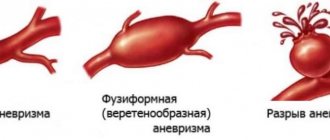Why do tumors appear in healthy brain tissue? The answer to this question will sooner or later be given by the results of numerous scientific studies, but so far scientists are only on the way to understanding the underlying mechanisms of oncogenesis.
Although the exact causes of brain tumors have not yet been established, the so-called “risk factors” that can trigger the development of the disease have been quite well studied.
The likelihood of a tumor developing in the brain may increase due to:
- aggressive influence of the external environment (environmental risk factors);
- poor heredity, as well as a decrease in natural immune defense and metabolic disorders as we age (genetic risk factors).
General information
Recently, there has been a growing trend in the incidence of brain tumors, which account for 3-6% of all neoplasms in the body and occupy 3-5th place in adults.
The increase in incidence can be explained by the widespread availability of diagnostic methods (CT, MRI, PET). The incidence of tumors increases in the elderly and elderly. Among primary tumors, 40% are benign, and 60% are oncology - malignant tumors. If we consider a brain tumor in an adult, the incidence of malignant tumors in women is slightly lower compared to men. Brain tumors include not only formations of the brain substance, but also the membranes and nerve roots.
In this regard, a more correct designation for brain tumors would be “intracranial” tumors. Women mostly have neuromas and meningiomas , and men have gliomas . Among the variety of intracranial neoplasms, gliomas, which include glioblastoma (the most common type of tumor), account for 55%. The ICD-10 brain tumor code is C71, and the subheadings C71.0-C71.9 specify the location. To a greater extent, compared with primary tumors, the incidence of metastatic brain tumors is noted. Their source in men is lung , kidney and colon cancer, and in women it is colon , breast and melanoma . Let's figure out how a tumor of one location or another manifests itself and whether it is possible to detect this disease in the early stages.
Consequences of treatment
The consequences of therapy depend on the type, location and size of the tumor, the characteristics of the methods used, as well as the general state of health.
Classic surgery carries a risk of infection and bleeding. Other possible consequences are determined by the location of the outbreak. For example, removing cancerous tissue near the optic nerve can lead to vision loss.
Both after chemotherapy treatment and after a radiation therapy session, general side effects such as fatigue, weakness, lack of appetite, nausea, and temporary hair loss may be observed.
The risk of complications when using stereotactic radiosurgery and tomography methods is minimal.
Recovery after treatment
The timing of complete recovery and the characteristics of the rehabilitation period are determined by the characteristics of the disease and treatment.
For example, after surgery you may need to stay in hospital for several weeks, but after radiosurgery you may be discharged home the next day. Centers where brain tumors are treated and removed using radiosurgery.
| Link to center page | Sign up for a consultation |
| Sofia - oncology center in Moscow | +7 499 322-26-14 |
| LDC MIBS - oncology center in St. Petersburg | |
| MMC RDiLOZ - interregional oncology center in Voronezh (on Ostuzheva) | +7 473 300-34-90 |
If you need a second opinion to clarify your diagnosis or treatment plan, send us an application and documents for consultation, or schedule an in-person consultation by phone.
Expert opinion
Pathogenesis
With any tumor, the defining feature is cell proliferation that gets out of control. The cause of this reproduction is an oncogene. Cell proliferation, invasive growth and the immune response of cells are interrelated, but are independent processes associated with genetic changes. Thus, the TSC-22 gene has been studied, which is important in various malignant brain tumors. In brain gliomas, the metabolism of non-heme iron is important.
Changing the cell genome activates antitumor immunity. However, the immune system also contributes to tumor progression by producing an immunogenic tumor phenotype.
As the tumor grows, the following occurs:
- its invasion into surrounding tissues and their destruction;
- compression of underlying tissues;
- increased intracranial pressure;
- cerebral edema;
- difficulty in the outflow of cerebrospinal fluid;
- the growth of new vessels in the tumor, becoming a source of bleeding;
- disturbance of venous and arterial blood flow.
Classification
According to the latest classification, there are 146 tumor subtypes. It can be either a benign tumor or a malignant one. The term "brain cancer" is not entirely correct. Cancer does not occur in the brain - the tumor has other names, this term is simply used for simplicity. Benign tumors grow slowly and often reach large sizes without causing symptoms because there is no swelling of the brain. Malignant tumors grow quickly, spread to neighboring tissues, but rarely spread (metastasize) beyond the central nervous system.
According to the primary focus they differ:
- Primary tumors developing from brain tissue, cranial nerves and meninges.
- Secondary, having a metastatic origin.
According to cell composition:
- Meningiomas (meningiomas). They come from the meninges.
- Neuroepithelial ( glioma , ependymoma , astrocytoma ) are localized in brain tissue.
- Pituitary tumors.
- Neuromas (tumors of intracranial nerves).
- Metastatic tumors.
- Dysembryogenetic, arising during embryogenesis.
In adults, neuroepithelial tumors (of which gliomas) and tumors from the meninges most often occur. Pituitary adenomas and neuromas are much less common . For brain tumors, the TNM classification, which is used in oncology, is not used, since there is no metastasis to regional lymph nodes and no distant metastases. But according to morphological characteristics, malignant tumors are divided into high-malignant (Grade III–IV) and low-malignant (Grade I–II). High-grade tumors are very active, fast-growing, and diffusely grow into surrounding tissues. These are poorly differentiated or generally undifferentiated tumors, examples of which are pineoblastoma and glioblastoma .
Glial tumors account for 50-55% of all intracranial tumors. They are detected from 30 to 60 years and if we consider their localization, then in descending order they are distributed as follows: cerebral hemispheres (lobes - frontal, temporal, parietal, occipital), cerebral ventricles, subcortical ganglia and trunk, corpus callosum, cerebellum, visual nerves.
Glial neoplasms are characterized by rapid growth, a tendency to metastasize, which is not typical for other tumors, frequent recurrence and a poor prognosis. A characteristic feature of glial neoplasms is invasive growth and the absence of a boundary between the tumor and healthy tissue.
Highly malignant gliomas have this type of growth - glioblastoma and anaplastic astrocytoma . Gliomas are characterized by intensive formation of a vascular network, which accelerates tumor growth, the rate of tissue germination and metastasis.
Of the glial tumors, glioblastoma is the most common; it belongs to grade IV malignancy. Glioblastoma occurs in older people, and more often in men. This tumor is most often located in the hemispheres. Metastasis is a rare phenomenon, but can be observed, which is associated with surgical treatment, radiation therapy and prolongation of the life of patients.
Sarcoma (or rather gliosarcoma) is a histological variant of glioblastoma . It contains malignant glial tissue and sarcomatous tissue - hence its name. The clinical picture of glioblastoma is characterized by a more malignant course: rapid recurrence after treatment, metastasis (to the lungs, neck lymph nodes, liver, spinal cord). It is because of metastasis that gliosarcoma is identified as a separate type. of epilepsy and speech disorders are more common Radical removal of these tumors is possible only in 50% of patients.
Hemangiopericytoma is a malignant tumor that originates from pericapillary cells. These tumors usually develop in the legs, retroperitoneum, and pelvis. Intracranial hemangiopericytoma is quite rare and is a copy of soft tissue hemangiopericytoma. The “behavior” of hemangiopericytomas differs from meningiomas in that they are characterized by recurrence even in the absence of recurrence of the primary tumor. There is also a risk of distant metastases in the postoperative period. Metastases outside the central nervous system appear years after treatment.
Craniopharyngioma is a benign (according to histological characteristics) slowly growing tumor, which is often located in the area of the sella turcica. It is the only congenital tumor and is considered a developmental defect. It can appear at any age or not appear at all. Despite its benign nature, the manifestations of craniopharyngioma are often similar to malignant tumors.
Craniopharyngiomas can metastasize and grow into the thalamus, pituitary gland, and optic chiasm (under the hypothalamus). In the clinic, they manifest themselves as neuroendocrine syndrome , optic nerve atrophy or partial blindness - the temporal part of the right and left visual field falls out, and children develop hydrocephalic syndrome (accumulation of cerebrospinal fluid in the ventricles). If possible, the craniopharyngioma is completely removed, and after partial removal, local radiation therapy .
Treatment
The choice of treatment method directly depends on the nature of the disease, the location of the tumor, its size and type. The age and general condition of the patient are also taken into account. The main treatment methods include:
- Surgical intervention. Some tumors have a convenient localization and are easily separated from the tissues without damaging the surrounding organ. If the location is inconvenient, there is a brain tumor, surgery will not completely help. The surgeon cuts off part of the tumor to eliminate compression and significantly improve the patient’s quality of life.
- Radiosurgery. It refers to the types of radiation. As part of the procedure, the patient undergoes small doses of radiation from different directions, while the rays converge at the location of the tumor, destroying it. At the same time, the surrounding tissues remain unharmed.
- Radiation therapy. You can irradiate the tumor directly or the patient’s entire brain. The second option is used for relapses, when it is necessary to eliminate the risk of developing metastases in tissues.
- Chemotherapy. Drugs that have a systemic effect on the tumor and destroy it, preventing the development of metastases to organs. It helps fight symptoms, slow down the growth of tumors and reduce the risk of relapse.
- Targeted treatment. They have a targeted effect on tumor cells, killing them. Reproduction and growth are blocked. Causing cell death.
To regulate the patient's condition, constant monitoring is carried out using MRI. If the tumor does not shrink or continues to grow, the chosen method of therapy is not effective. Also, regular studies are carried out after victory over brain cancer to exclude recurrence of the pathology.
After treatment and victory over brain cancer, rehabilitation will be required. Most often, the tumor affects important functions that will have to be restored after quality therapy.
Typically, rehabilitation includes a number of important activities. For example, classes with a speech therapist to restore normal speech, individual lessons with a tutor, physical therapy and occupational therapy. It is also recommended to use appropriate medications to reduce the severity of symptoms and increase the effect of treatment, as well as eliminate side effects.
Causes of brain tumors
There are gene predictors of many tumors, including brain ones. However, these predictors are not 100% responsible for the development of cancer. In its development, a combination of different conditions and factors is important.
- The main risk factors for brain cancer are: the presence of genetic syndromes ( Li-Fraumeni , von Hippel-Lindau , Turcotte , neurofibromatosis ), tumors in the family and brain irradiation.
- Effect of age on brain cancer. The peak incidence of gliomas in men is 50-59 years of age and older. oligodendrogliomas occur at this age , and astrocytomas at 30-40 years of age. The increase in incidence at 60-75 years of age may be associated with the use of antihypertensive drugs, which, according to some authors, have a carcinogenic effect.
- The incidence of meningiomas in urbanized cities is higher than in rural areas, and the opposite trend is observed in the incidence of gliomas .
- Environmental influence. The incidence of gliomas in areas with unfavorable ecology is higher. The influence of professional factors. An increased incidence is observed among programmers, health workers, agricultural workers, and people working in the meat-cutting industry. Low incidence rate among preschool teachers. Working in coal mines does not increase the risk of illness, just as the influence of petroleum products as a production factor has not been reliably confirmed.
- Considering the causes of brain cancer in women, we can note the influence of hormonal changes in postmenopause , in which there is an increase in the incidence of glioblastomas compared to the premenopausal period. The risk is almost doubled in postmenopausal women who did not breastfeed. The risk of the disease is reduced when taking hormonal drugs during menopause.
- The influence of magnetic and electric fields and x-ray irradiation. Reliable studies have shown that temporal lobe tumors develop on the side of mobile phone use, which is associated with a local effect on brain structures. When using a telephone, the incidence of astrocytic tumors increases. In addition, the risk of acoustic neuromas is increased. When working with magnetic and electric fields, with frequent X-ray examination of the facial skull, the incidence of brain gliomas also increases. There are studies that prove the influence of household electrical appliances (heating pad, electric tongs, electric blanket, vibrating massagers, computers, TVs, microwave ovens, humidifiers) on the occurrence of tumors. The impact of the consequences of the Chernobyl disaster is a debatable issue.
- The risk of developing brain gliomas (in everyday vocabulary “head cancer”) is influenced by a diet high in nitrates and genetically modified foods. Drinking more than 7 cups of coffee also increases the risk of developing malignant gliomas. The relationship between tumors and alcohol intake has not been proven.
- Smoking factor. Children born to smoking mothers have a 1.2 times higher incidence of brain tumors, which develop at 2-4 years of age. This factor is important in the development of benign and malignant tumors, but this is especially true for astrocytomas. The risk of developing tumors in children is even higher if the father smokes. The risk of gliomas is increased in women who smoke and in people of both sexes who smoke marijuana.
Examination and treatment in Germany
When the first signs of a brain tumor appear, you should consult a doctor and get examined. Diagnosis of diseases of the central nervous system requires a high level of professionalism from the doctor. To identify brain tumors and confirm the diagnosis, high-quality, high-precision equipment is necessary. All this is available in clinics in Germany. Thanks to ]Booking Health[/anchor] you can undergo examination and treatment in this country.
In Germany, the most modern methods for diagnosing cancer formations are used. In addition, the latest methods of treating tumors, both benign and malignant, are available here.
Thanks to the Booking Health online platform, you can choose a clinic and book treatment at the best price. In addition, our specialists can choose the best medical facility for you, taking into account:
- Diagnosis and treatment success rates
- Clinic level (institutional, academic, etc.)
- Clinic specializations
- Availability of innovative equipment
- Availability of innovative drugs
- Opportunities to participate in clinical trials
- Other factors important to you
With Booking Health, you will not only receive high-quality medical care in Germany, but also save up to 70% due to the absence of overpayments and unnecessary procedures. We will fully provide service and organizational services - an invitation to treatment, obtaining a visa, flights, transfers, accommodation, translation services, etc. All you have to do is focus on restoring your health.
Brain tumor symptoms
How to recognize this disease? Very often, the first symptoms appear when the tumor is significant in size, grows and often becomes inoperable. In some cases, a tumor is found by chance during examination due to various complaints. A tumor in the head behaves differently. Glioblastoma , if not treated, leads to death within three months, and meningioma grows up to 10 years without causing discomfort to the patient. With benign tumors, the course of the disease is slow and there is a gradual increase in symptoms, periods of improvement alternate with periodic deterioration. In malignant tumors, the disease can begin suddenly, resembling vascular diseases ( stroke ), which is associated with hemorrhage into the tumor. Any new or unusual symptoms for the patient that are of an increasing nature should alert the patient and it is worth thinking about a tumor process.
Benign and malignant tumors are characterized by the same symptoms - cerebral and focal, but the degree of their growth and severity will be different. General cerebral symptoms include headache , vomiting , oculomotor disturbances , and optic disc congestion. Focal symptoms depend on the location of the tumor - these may be impaired vision, hearing, paralysis and paresis.
What symptoms suggest this disease? Headaches due to a brain tumor are the most common symptom. They have a different character - it depends on the location of the formation and its size. A change in mental state is also noted: drowsiness , apathy , cognitive impairment. When a tumor is inoperable, functional disorders occur (paralysis, paresis, blurred vision), signs of intracranial hypertension (vomiting, changes in the fundus), human behavior changes and dislocation syndrome develops (displacement of brain structures).
Symptoms of a brain tumor in the early stages
In the early stages, 70-80% of patients develop headache . How does your head hurt? Most often it appears at night and in the morning, somewhat decreases/stops during the day. Headache is associated with tumor formation, cerebral edema around the tumor, impaired venous outflow and occlusive hydrocephalus (closed hydrocephalus, in which the flow of cerebrospinal fluid is disrupted due to the closure of the cerebrospinal fluid ducts by the tumor).
The first signs of a brain tumor in the form of a headache may periodically decrease or even disappear with a change in the position of the head, in which the outflow of fluid improves. However, over time, the pain becomes more intense, lasts longer, or becomes permanent. If we consider the first signs in adults, we should note vomiting, which appears at night or in the morning with a headache and when the position of the head changes. In adults, isolated vomiting is a symptom characteristic of a tumor of the fourth ventricle, which is associated with irritation of the vomiting center. Generalized and local epileptic seizures occur in women and are characteristic of slow-growing tumors ( meningiomas or gliomas ). For a long time, seizures may be the only manifestation of the disease.
As the tumor grows, mental symptoms appear. Mental disturbances are more typical for intracerebral tumors and in 15-20% of patients they are the first symptom; in other patients they appear as the tumor enlarges. Mental disorders include: stupor or euphoria, lethargy, weakened attention, decreased criticism and memory, indifference, disinhibition, untidiness.
Symptoms of brain cancer in the early stages
It is known that cancer is more malignant. Thus, the interval between the initial symptoms of hemangiopericytoma and diagnosis is 3 months. The first signs in women are headache and vomiting; at an early stage, changes appear in the eye (exophthalmos) and fundus (congestion, pallor of the optic nerve head, dilatation of veins and arteries. In an adult with anaplastic astrocytoma and glioblastoma multiforme, motor and sensory sensations quickly develop disorders, and epileptic seizures appear.
When the tumor is localized supratentorially (above the tentorium of the cerebellum), focal symptoms in women appear before the increase in intracranial pressure. At an early stage appear:
- Local unilateral convulsive seizures, and later generalized ones.
- Impaired motor skills and sensitivity ( hypoesthesia , pyramidal insufficiency ).
- Visual impairment ( exophthalmos , loss of visual fields).
- Obesity or malnutrition , polyphagia , diabetes insipidus , growth retardation, premature sexual development - with tumors of the third ventricle/chiasm.
- Changes in the psyche (attention deteriorates, speech is impaired, inhibition and personality changes appear). , intracranial pressure increases .
If the tumor is localized under the tentorium, then the leading early symptoms will be headache in the morning, vomiting in the morning, squint, and blurred vision. General symptoms include fatigue, decreased intelligence, and loss of motor skills. Late symptoms are characterized by: loss of balance and coordination, awkward movements, weakness of leg muscles, nystagmus . Symptoms of brain stem damage are also added: dizziness , nasal voice , different eye widths, diplopia (double vision), smoothness of the nasolabial fold, deviation of the tongue from the midline, choking.
A tumor of the cerebellum is accompanied by loss of coordination, clumsiness, unsteadiness when walking, changes in gait, dizziness and hearing loss . The tumor blocks the outflow of fluid, it accumulates in the cavities (ventricles of the brain), and therefore intracranial pressure . Therefore, headaches, vomiting, lethargic sleep, and visual disturbances (double vision) appear.
Symptoms of brain cancer
There are many symptoms and signs of brain tumors. Their manifestation depends on the size of the tumor, location and speed of its growth. The most common symptoms of brain cancer include:
- the occurrence of frequent, uncharacteristic headaches, a change in the nature of the pain or its intensification;
- unexplained nausea or vomiting;
- vision problems such as blurred and double vision or loss of peripheral vision;
- gradual loss of sensation or movement in an arm or leg;
- difficulty with balance;
- speech problems;
- confusion in daily activities, feelings of confusion or disorientation;
- changes in personality or behavior;
- convulsions, especially if not previously observed;
- hearing problems;
- memory impairment and difficulty concentrating;
- drowsiness, sleep problems.
In order to understand how brain tumors manifest themselves, we have listed below the symptoms of the most common ones:
- meningioma (headaches, weakness in an arm or leg, personality changes, vision problems, seizures);
- glioblastoma (nausea and vomiting, headaches that may be worse in the morning, weakness in the body (eg, arm, leg, or face), memory problems, seizures, difficulty with balance);
- astrocytomas (headaches, memory loss, seizures, changes in behavior);
- pituitary tumors (headaches, vision problems, changes in behavior, changes in hormone levels);
- metastatic tumors (headaches, seizures, loss of short-term memory, changes in personality and behavior, weakness on one side of the body, difficulty with balance).
These symptoms do not always indicate the presence of a brain tumor. To confirm or refute suspicions, at the first signs of brain cancer, doctors conduct the necessary diagnostic examinations.
Diagnostics
Instrumental imaging methods - computed tomography (CT) and magnetic resonance imaging (MRI) - allow one to accurately determine a brain tumor. MRI is considered the best method for detecting tumors. The images obtained with this method are more detailed than those obtained with CT.
Magnetic resonance imaging scanner Siemens Magnetom Sola at the Spizhenko Clinic
In general, MRI is used more often when diagnosing brain tumors. A CT scan is indicated in cases where MRI is not appropriate (for example, in overweight people or people with a fear of closed spaces). Also, CT, unlike MRI, allows you to evaluate the bone structures in the area of the tumor.
Instrumental imaging methods show the location and extent of the tumor, but they cannot always accurately determine the type of tumor. In most cases, this can only be done with a biopsy. It is performed as an independent procedure or during an operation to remove a tumor. Based on the selected tissue sample, the pathologist determines whether the tumor is benign or malignant and classifies it.
The results of the diagnostic examinations allow the doctor to establish a diagnosis, describe the tumor and plan future treatment.
Tests and diagnostics
- CT scan. Allows you to identify the “focus”, and with contrast enhancement, which expands the capabilities of CT, you can determine the nature of the growth (intracerebral or extracerebral) and suggest the degree of malignancy. When contrasting, the heterogeneity of the tumor (differences in tumor cells) increases; the higher the malignancy, the more pronounced the heterogeneity of the tumor, which is associated with pronounced vascularization of the tumor.
- Magnetic resonance imaging. This is a more informative method that, in addition to localization, also determines the structure and interaction with surrounding formations and parts of the brain. When planning an operation, this data is very important.
Photo of MRI of a patient with meduloblastoma of the cerebellar vermis (A - coronal, B - sagittal projection)
MR angiography clearly shows the vessels supplying the tumor with blood, and therefore makes it possible to determine which vessels need to be “turned off” during surgery so that it is “bloodless”. MR tractography provides a topography of tracts that cannot be damaged.
Positron emission tomography. This method allows you to identify a tumor in the early stages (in its “infancy” state), and after surgery to control the process.
Symptoms of the disease
In the early stages, it is almost impossible to detect a brain tumor. The fact is that the main symptoms are very similar to other pathologies, which complicates diagnostic measures.
Most often observed:
- nausea, unlike poisoning or rotavirus disease, relief does not occur after the stomach is emptied;
- severe pain in the head, in an upright position, but without movement, the person feels relief, but the spasm worsens if he begins to move;
- epileptic seizures or convulsions;
- memory weakens and concentration decreases.
Such symptoms are rarely taken seriously, and in the meantime, it is much easier to cure a tumor in the head in the early stages of the disease. All of the listed symptoms will indicate the disease if they are present simultaneously in the patient. At the second stage, when the tumor grows and the meninges are excited, cerebral changes appear. These include:
- the sensitivity of the skin is lost in certain areas of the body;
- sudden dizziness accompanies the patient;
- muscle tissue weakens on one or both sides of the body;
- severe fatigue and drowsiness become a constant companion of a person;
- there is double vision in the eyes.
At this stage of a brain tumor, treatment may still be effective. However, therapeutic procedures are more difficult and longer than in the early stages of the pathology. At the same time, the risk of relapse increases significantly.
The symptoms of the second stage of a brain tumor are similar to several diseases - epilepsy, hypotension or neuropathy. Therefore, you should not panic and make terrible diagnoses in advance. It is necessary to visit a specialized doctor and undergo appropriate examinations. Any of the listed conditions requires doctor's supervision and timely treatment.
Important!
If you suspect something is wrong, contact your doctor immediately. Once the diagnosis is confirmed, you will be prescribed a course of chemotherapy. It is recommended to take the course in trusted clinics. They provide high-quality diagnostics and also use the latest treatment technologies.
Procedures and operations
Brain cancer is a serious disease and tumor removal is important to perform accurately, so a neuronavigation system is used during the operation. Before surgery, the patient’s research data is entered into the navigation system program, and a 3D computer model of the brain with tumors and blood vessels is obtained, which helps virtually plan the operation. Surgical treatment is based on the principle: extracerebral tumors are removed completely, and intracerebral tumors are removed as much as possible, so that brain function does not suffer. Any operation should involve minimal trauma, preservation of brain structures, blood vessels and veins. Some areas of the brain are considered inoperable - these are the motor and speech areas.
Minimally invasive surgery to remove a tumor is performed using laser, stereotactic and endoscopic techniques. Minimally invasive operations are performed through endonasal access (through the nostril), supraorbital (through an incision above the eyebrows), retrosigmoid (incision behind the ear), as well as through any point convenient for removing deep-lying tumors. Minimally invasive approaches are as effective as invasive ones. If the operation is performed on functionally significant areas, then laser technologies are used. This could be laser thermal destruction. For deep-lying tumors, brachytherapy and photodynamic therapy are used to destroy them.
Highly effective technologies allow treatment without surgery. These include radiosurgery methods: linear accelerator, gamma knife. However, they can be used for small lesions.
Gamma Knife is a form of radiation therapy. This ultra-precise method destroys even several formations per session. The method is applicable for multiple lesions (tumors of metastatic origin). The CyberKnife system is equipment based on a linear accelerator that delivers high doses to the tumor and destroys it. The operation does not require open intervention. If the tumor is large, the bulk of the tumor is first surgically removed, and then irradiation with the CyberKnife system is used.
Boron-neutron capture therapy method. With this method of exposure, the destruction of a tumor that has accumulated the boron-10 isotope is carried out by neutron irradiation. Boron accumulated in cells increases sensitivity to radiation. Boron isotopes absorb neutrons and a “nuclear” reaction occurs, during which energy is released that destroys the new formation. Brachytherapy has not become widespread. It is carried out by implanting radioactive sources (iridium-192, iodine-125, palladium-103) into the tumor tissue.
Before the operation, the possibility of its implementation and safety are taken into account. Without these predictions, surgical treatment is considered inappropriate. With any type of intervention, consequences are possible in the form of disturbances in movement, speech, hearing, vision, reading, and mental changes. It all depends on the location of the tumor and the degree of trauma to surrounding tissues. When a pituitary tumor is removed, hormonal function is disrupted. Motor disturbances that occur immediately after surgery are associated with cerebral edema. But with the use of decongestants, patients recover quickly.
In children
Tumors of the central nervous system in children occupy second place after acute leukemia . In boys, the incidence is higher and its peak occurs at 5-9 years. The location of all tumors is assessed in relation to the tentorium of the cerebellum: above it is a supratentorial location, below it is infratentorial. In 80% of cases, a brain tumor in children is located below the tentorium and affects the anatomical formations of the posterior cranial fossa, in particular the cerebellum. The most common forms include medulloblastoma , astrocytoma , and brainstem glioma , which accounts for 15% of all tumors in children. The brain stem includes the pons, cerebellum, medulla oblongata, midbrain and diencephalon. Tumors in children under 3 years of age are often large and occupy 1/3 of the brain volume. It is this fact that causes an increase in intracranial pressure , which is manifested by headache and vomiting, which occurs in children at the very beginning of the disease and then disappears.
Clinical symptoms depend on age, the severity of hydrocephalus and more on the location of the tumor than on its morphological structure. In young children, symptoms do not appear for a long time or are slightly expressed, which is associated with the elasticity of the bones, the presence of open sutures and fontanelles, so the child remains compensated for a long time. As a result, the tumor is not diagnosed in a timely manner. When examining young children, it is important to measure the head ( macrocephaly if intracranial pressure is increased ). Changes in the fundus are also detected. Signs of increased intracranial pressure develop gradually: fatigue, paroxysmal headaches appear, schoolchildren have decreased academic performance, vision loss, and impaired upward gaze.
Cerebellar tumors are most common in childhood and occupy 60%.
1 - cerebellar hemispheres, 2 - cerebellar vermis, 3 - cerebellar peduncles, 4 - roof of the fourth ventricle, 5 - flocculus, 6 - cerebellar tonsils
In the cerebellum there are medulloblastomas and astrocytomas . Tumors are located only in the cerebellum or spread into the 4th ventricle and brainstem when large, causing hydrocephalus . With a tumor of the cerebellum, disturbances in gait and coordination, dizziness , impaired handwriting, weakness in the legs, and decreased muscle tone appear. With severe cerebellar ataxia, the child cannot walk or sit, nystagmus , and the child loses acquired skills. In most cases, the disease begins with hydrocephalus, as the tumor compresses the cerebrospinal fluid flow paths. In addition to lack of coordination, the child complains of a headache, nausea and vomiting. With a large tumor, compression of the brain stem occurs.
CT or MRI is used to diagnose cerebellar tumors in children. Children under 1 year of age can undergo an ultrasound scan of the brain. The method of choice is surgery to remove the tumor. It must be completely removed, since the result and prognosis for life depend on it. If the tumor is malignant, a course of radiation therapy or chemotherapy is given if the child is under 3 years old.
Brainstem glioma.
The brain stem connects the structures of the central nervous system and is involved in organizing human behavior. Glioma is a diffuse tumor that does not have a specific shape. It spreads through finger-like projections into healthy tissue. Due to this nature of growth and localization, removal of pontine gliomas is surgically impossible, and there is no cure for these tumors. In this regard, the survival rate of children is very low - 10% live 2 years after diagnosis. Trunk gliomas grow rapidly and symptoms develop within one month and progress rapidly.
Symptoms of diffuse pontine glioma include:
- Difficulty swallowing, drooling.
- Weakness in the arms and legs (usually one-sided).
- Loss of balance, impaired walking.
- Jerky movements.
- Double vision, blurred vision, drooping eyelids, squint, eye movements.
- Facial muscle weakness or paralysis.
- Developmental delay.
- Abnormal reflexes.
- Behavioral changes, learning difficulties.
Craniopharyngioma is often diagnosed between the ages of 5 and 14 years. The tumor is benign - it grows slowly, rarely spreads to healthy tissue, very rarely malignizes, but recurs quite often. However, if vital structures of the brain are compressed, the tumor can become dangerous. Often localized in the pituitary gland and hypothalamus. This arrangement affects endocrine functions. When the tumor is located near the optic nerve, vision is impaired.
Craniopharyngioma is diagnosed at a late stage (many years after the first symptoms appear). At the onset of the disease, intracranial hypertension appears, then visual and hormonal disturbances appear (the secretion of gonadotropins, growth hormone, and thyroid-stimulating hormone is impaired). Patients also have diabetes insipidus . Impaired circulation of cerebral fluid as the tumor enlarges causes hydrocephalus .
How does a headache occur with a tumor of the pituitary gland of the brain?
Patients often ask how headaches occur with a tumor of the pituitary gland of the brain. This depends on the stage of the pathological process, the size of the neoplasm, as well as the nature of its growth.
With pituitary cancer, signs of a brain tumor usually do not appear at an early stage. A tumor can become an incidental finding during various types of examinations. If the first symptoms of a brain tumor appear, they are associated with endocrine disorders. After all, the pituitary gland is a gland. It produces hormones. The first symptoms of a brain tumor that occur depend on which hormone production increases.
But with further growth of the tumor and the pituitary adenoma reaching a large size, a headache occurs. It may be different. When the tumor spreads beyond the sella turcica (the anatomical cavity in which the pituitary gland is located), visual impairment appears. And with further growth of the adenoma, the third ventricle may be compressed. As a result, pain sensations characteristic of hypertension syndrome occur.
The neoplasm may grow invasively. Therefore, sometimes it grows into the cavernous sinus. In this case, a diffuse headache of a pulsating nature is observed. Patients often indicate the eyes as the main location.
Select a clinic and treatment
Prevention
There is no prevention of primary brain tumors, just as no measures have been developed to prevent metastases in the brain. Therefore, there is no way to stop the incidence of brain tumors.
Recommended general activities for a healthy lifestyle:
- Strengthening immunity , since when it decreases, the risk of developing tumors increases.
- Do not be exposed to viral diseases.
- Rejection of bad habits.
- Healthy eating (eat organic foods whenever possible).
Forecast
Using advanced technologies, a benign tumor is radically removed, and the patient is completely cured. If the tumor is malignant, it is impossible to achieve a complete cure. In some cases, the prognosis of the disease depends not on the degree of malignancy, but on the location of the tumor and the possibility of its total removal. How long do people live with brain cancer? In patients with primary tumors, the prognostic criterion is histological diagnosis. A very unfavorable prognosis for glioblastoma , which belongs to the 4th degree of malignancy and gliosarcoma, which is a histological variant of glioblastoma. Life expectancy without treatment is 3-4 months, and with treatment it increases to 9 months (according to other sources, up to 14 months). Survival for gliosarcoma depends on age, extent of surgery and the possibility of radiation treatment .
How long do they live after removal? If a relapse occurs after removal, radiation therapy and chemotherapy , then the prognosis is unfavorable. In such cases, the five-year survival rate is less than 10%. For gliosarcoma , for glioblastoma multiforme - one year, for anaplastic astrocytoma - three years, and for astrocytoma (well-differentiated) more than 5 years. If a patient has pilocytic astrocytoma, they live with it for more than 10 years, and it is cured by surgery.
Diagnosis of the disease
When primary symptoms or signs of a brain tumor appear, a person needs to immediately see a neurologist and ophthalmologist. To collect anamnesis, echocardiography, EEG, and focal symptoms are examined.
A brain tumor, the symptoms of which are often focused on a person’s vision, requires consultation with a specialist. The ophthalmologist checks your visual acuity by performing standard examinations. Also determines visual fields and performs ophthalmoscopy procedures. This is important for understanding the size and impact of the tumor on the visual organs and other important body functions.
If necessary, an additional consultation with a specialist otoneurologist is scheduled.
If the doctor suspects a large tumor, you will have to undergo a CT or MRI of the brain. This can be done at the clinic medart.by. Such studies help to visualize the tumor and determine its boundaries, clear location and influence on other organs and systems.
In addition to standard procedures, the doctor can prescribe a number of special studies that help determine the malignancy of the tumor, analyze metabolic abnormalities, and distinguish between multifocal tumors. Sometimes it is necessary to do a biopsy of the tumor, which will provide accurate data about the nature of the tumor.
Among the main analyzes are:
- MRI of cerebral vessels;
- functional MRI;
- MR thermography;
- MR spectroscopy;
- PET scan of the brain;
- SPECT.
Tests and diagnostic studies are prescribed exclusively by the doctor after collecting an anamnesis. Going through these procedures on your own without justification and prior consultation is unacceptable. A person can go to the doctor on his own if he believes that his symptoms are similar to those of brain cancer, but he can only visit an MRI, ultrasound or other functional diagnostic rooms with a referral from a doctor.
Diagnosis is required when relatives already have cancer in the family, and the patient also has all the signs of early-stage brain cancer. It's a good idea to get regular checkups for people who have suffered a traumatic brain injury or stroke.
List of sources
- Dzeranova L.K., Pigarova E.A., Petrova D.V. Space-occupying formations of the hypothalamic region and disorders of the central regulation of homeostasis/ Obesity and metabolism. - 2014. - No. 3. From 45-50.
- Balkanov A.S. Malignant glioma of the brain: age-related features, new approaches to diagnosis and treatment: Abstract of thesis. dis. ...Dr. med. Sciences / A.S. Balkanov. – Moscow, 2010. – P. 145. 2.
- Matsko D. E. Classification of tumors of the central nervous system (WHO) / D. E. Matsko, M. V. Matsko // Russian Neurosurgical Journal named after. prof. A. L. Polenova. – 2021. – T. VIII, No. 4. – P. 5-11.
- Trashkov A.P., Spirin A.L., Tsygan N.V. Glial tumors of the brain: general principles of diagnosis and treatment/Pediatrician. - 2015. - No. 5. - P. 8-10.
- Belsky K.K. Incidence of malignant gliomas of the brain in the Volgograd region. /Russian journal of oncology. - 2010. - No. 4. - P. 39-42.
Brain cancer stages and prognosis
For most types of malignant neoplasms, the stage is determined depending on how far the disease has spread throughout the body. Brain tumors can only spread to other parts of the central nervous system and almost never spread to other organs. This is why brain tumors are not staged like most other types of cancer.
Brain cancer is a complex disease, making survival difficult to predict. For a brain tumor, the prognosis will depend on factors such as: your age, the type of tumor, its location and size, growth rate, the presence of gene mutations and other changes in the tumor cells, the effectiveness of the treatment and the general health of the body.
Taking into account all the factors, your doctor will be able to provide more accurate information. Typically, about 15 out of 100 people with brain cancer survive 10 years or more after diagnosis.









